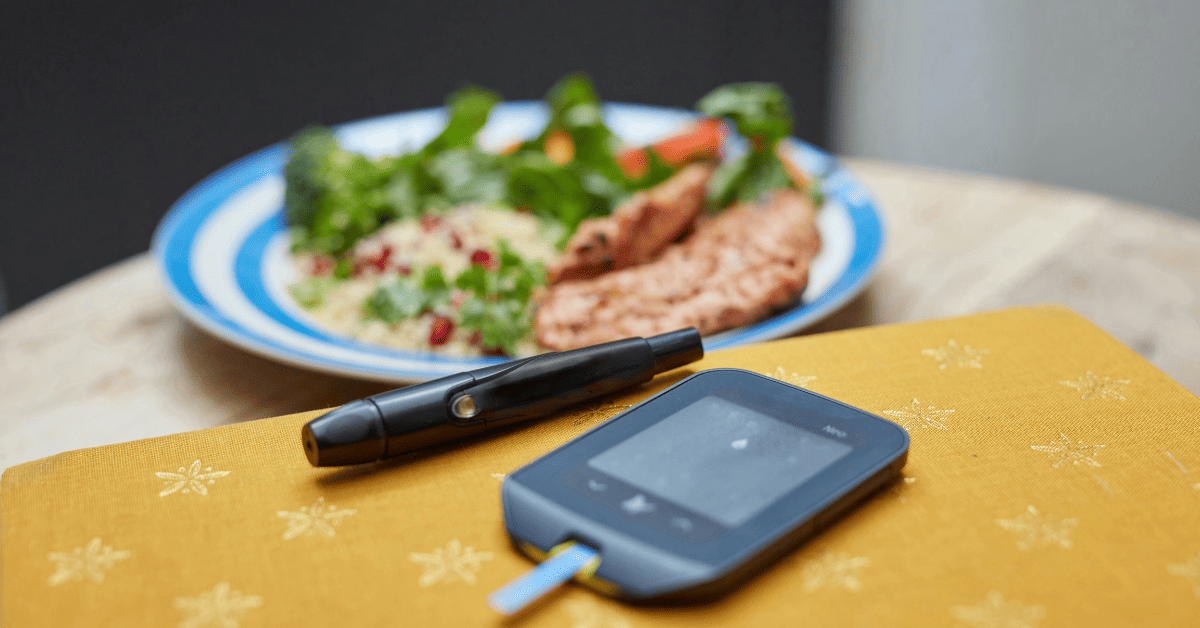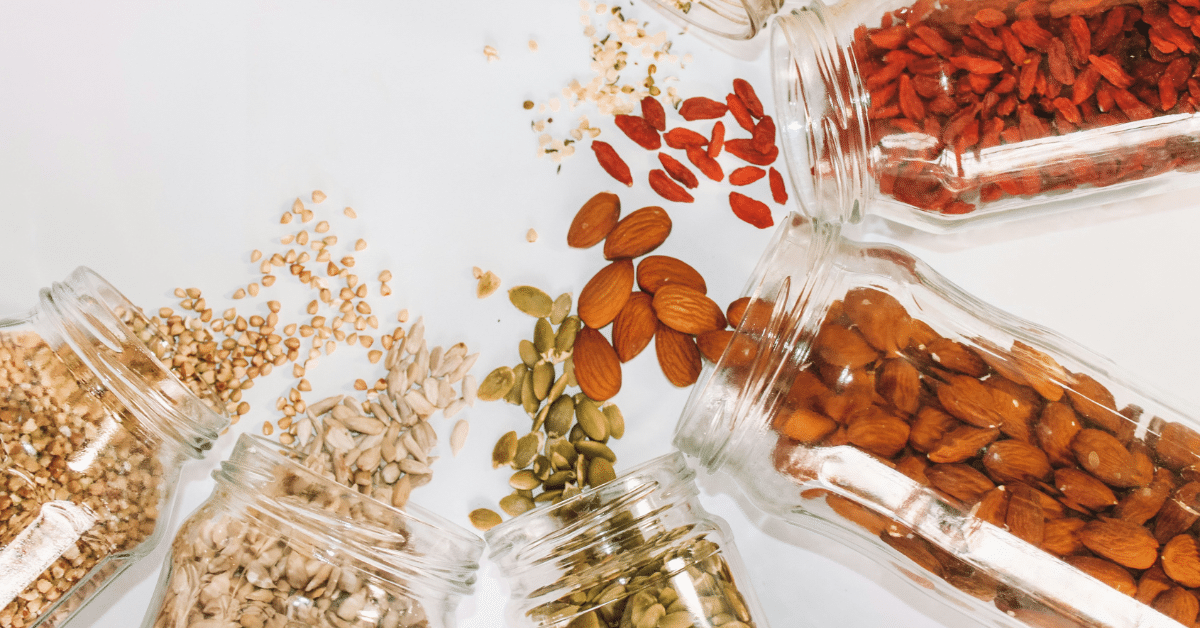5 Daily Changes to Support Healthy Blood Sugar Levels
When it comes to balancing your blood sugar, small shifts really can create big results. It is important for everyone to care about their blood sugar levels because both chronic and short-term elevations in blood glucose – even in people without diabetes – are associated with increased risks of cardiovascular disease, kidney disease, nerve damage, and other serious health complications.
You don’t need an extreme diet, endless tracking, or a complicated routine. The truth is, your daily habits, like how you build a meal, move your body, and take time for rest, have more of an impact on your blood sugar balance than any one “perfect food.”
Whether you’re working toward more stable energy, managing insulin resistance or prediabetes, or simply trying to feel better in your own skin, you can start making progress today. And it all starts with a few simple, science-backed steps.
Let’s look at five daily habits that support healthy glucose levels, steady energy, and long-term metabolic health. No drastic overhauls required.

Change #1: Add Beans to Carb-Rich Meals
Don’t underestimate the power of beans. Seriously.
Black beans, chickpeas, and lentils are quite the heroes when it comes to blood sugar balance. Adding them to a rice bowl, pasta dish, or soup helps slow digestion and prevent the big glucose spikes that leave you crashing later.
That’s thanks to their natural mix of fiber and plant-based protein, which slows how quickly carbohydrates are broken down and absorbed. Research shows that pairing beans with carb-heavy foods can significantly reduce blood sugar responses after eating.
You’re not cutting out carbs, you’re making them work smarter for you.
Nutrient Spotlight: Beans are packed with more than just fiber and protein. They’re also rich in magnesium, potassium, iron, and folate, nutrients that support metabolism, energy production, and heart health. Magnesium, for instance, plays a direct role in insulin sensitivity, helping your cells use glucose more effectively.
Quick Tip for Using Dry Beans: If you’re using dry beans instead of canned, soak them overnight in plenty of water with a splash of apple cider vinegar or a pinch of salt. The soaking process softens the beans, reduces cooking time, and makes them easier to digest. After soaking, drain and rinse, then simmer in fresh water until tender. Once cooked, you can store them in the fridge for up to five days or freeze for later.
Try this:
- Add black beans to a burrito bowl with veggies and avocado.
- Stir chickpeas into pasta or grain salads.
- Make a simple lentil curry or black bean chili for a fiber-rich dinner.
Beans are inexpensive, filling, and versatile, making them a convenient addition that makes a big impact on your metabolic health.

Change #2: Save Carbs for Last
Here’s a surprisingly powerful trick: the order you eat your food matters.
Starting your meal with fiber and protein (like non-starchy veggies or chicken) before moving to carbs (grains and starchy veggies like potato) can lead to lower post-meal blood sugar spikes. This “carb-last” method gives your body time to process food more gradually, keeping glucose levels steadier and energy more stable throughout the day.
You’re not following a strict rulebook here, just a mindful order that supports how your body naturally handles food.
Why Fiber Matters: Fiber acts like a slow-release mechanism for your meal. When you eat fiber-rich foods first, it forms a gel-like layer in your digestive tract that slows how quickly glucose from your carbs enters the bloodstream. This helps prevent rapid spikes (and the inevitable crashes) that leave you tired or craving more sugar soon after eating. Fiber also feeds your gut bacteria, which influences hormones tied to hunger and blood sugar control.
Try this:
- Eat your salad or veggies first.
- Take a few bites of your protein before the bread or pasta.
- In mixed meals, eat around the starches first, then move to the carbs.
This one’s easy to implement anywhere ~ no tracking, no fancy prep. Just awareness that pays off.

Change #3: Power Up with Whole Grains
Not all carbs are created equal, and whole grains are where nutrition and balance meet.
Whole grains like oats, brown rice, quinoa, and barley contain all three parts of the grain – the bran, germ, and endosperm – giving them more fiber, vitamins, and minerals than refined grains. These nutrients support blood sugar control, digestion, and sustained energy.
Research links higher whole grain intake with better metabolic health and lower risk of type 2 diabetes. The key is to choose “whole” as the first ingredient on the label, such as “whole wheat flour” or “100% whole grain oats.”
Try this:
- Swap white rice for brown rice or quinoa at least half the time.
- Use whole grain bread, crackers, or wraps.
- Add oats or barley to soups and salads.
These simple swaps support steady glucose levels and nourish your body long-term.

Change #4: Move After You Eat
Your body loves movement, especially after a meal.
A light walk, a bit of tidying up, or even standing while folding laundry can help your muscles use the glucose from your meal for energy instead of letting it linger in your bloodstream. Studies show that just 10-15 minutes of gentle movement after eating can support healthy blood sugar control and insulin sensitivity.
A Little Science: After you eat, glucose from your meal enters your bloodstream to provide energy. Insulin’s job is to help move that glucose into your cells to use for energy. When you move, even just gently, your muscles act like sponges, soaking up glucose without needing as much insulin. This keeps your blood sugar more stable and supports your body’s natural insulin function.
Think of it as digestion support that doubles as self-care!
Try this:
- Take a short walk around the block or your home.
- Do light chores after dinner.
- Walk in place while catching up on messages or calls.
Small, consistent movement adds up, and it’s one of the easiest ways to steady your energy and mood after meals.

Change #5: Get Better Sleep
You can eat perfectly and still struggle with blood sugar if your sleep is off.
Poor sleep disrupts your body’s natural glucose regulation, often leading to higher blood sugar levels, increased cravings, and lower motivation for healthy choices. The good news: improving your sleep hygiene can directly support glucose control and metabolic health.
Even small adjustments, like keeping a consistent bedtime or unplugging from screens 30 minutes earlier, can make a noticeable difference.
Why Blue Light Matters: Blue light from phones, tablets, and TVs signals your brain that it’s still daytime, which delays the release of melatonin, your sleep hormone. Less melatonin means harder time falling and staying asleep. Try switching to warmer light settings in the evening, using blue light glasses, or setting a “digital sunset” where you power down devices an hour before bed.
Create a Calming Ritual: A soothing routine tells your nervous system it’s safe to slow down. Sip a small cup of chamomile or lavender tea about 30 minutes before bed. Both contain natural compounds that promote relaxation and can help ease you into restful sleep. Pair it with light stretching or a few minutes of deep breathing for added benefit.
Try this:
- Go to bed and wake up around the same time daily.
- Set a gentle “wind-down” reminder.
- Create a calm evening ritual ~ stretch, read, or dim the lights.
Better rest means better blood sugar (and better everything)!

Your Small Changes Add Up
If you take away one thing from this: you don’t need perfection to make progress. Maintaining healthy blood sugar levels is crucial for reducing the risk of both immediate and long-term health problems, even for those without a diagnosis of diabetes. Early intervention and lifestyle modifications can have significant benefits for overall health and longevity.
Each of these changes, from adding beans to your plate to improving your sleep, supports your body’s natural ability to regulate blood sugar. Start with one habit that feels doable today, and let it build from there. These daily choices can be your way of listening to your body.
When you’re ready to personalize your plan and get hands-on support, book a free complimentary wellness call. Together, we’ll build small, strategic habits that add up, one meal, one night’s sleep, one day at a time.
Medical Disclaimer:
The information provided on this blog is for educational and informational purposes only and is not intended as a substitute for medical advice, diagnosis, or treatment. Always consult with a qualified healthcare provider, such as your physician, pediatrician, or registered dietitian, before making any changes to your or your child’s diet, health routine, or treatment plan.
While we are a medical practice specializing in integrative and functional nutrition, the content shared here reflects general knowledge and holistic guidance, and may not be appropriate for every individial. Reliance on any information provided on this site is solely at your own risk.
Reference List
- Winham, D. M., Hutchins, A. M., & Thompson, S. V. (2017). Glycemic response to black beans and chickpeas as part of a rice meal: A randomized cross-over trial. Nutrients, 9(10), 1095. https://doi.org/10.3390/nu9101095
- American Diabetes Association. (n.d.). Diabetes superstar foods. https://diabetes.org/food-nutrition/food-and-blood-sugar/diabetes-superstar-foods
- Shukla, A. P., Iliescu, R. G., Thomas, C. E., & Aronne, L. J. (2017). Carbohydrate-last meal pattern lowers postprandial glucose and insulin excursions in type 2 diabetes. BMJ Open Diabetes Research and Care, 5(1), e000440. https://doi.org/10.1136/bmjdrc-2017-000440
- Touhamy, S. II, Levy, C. J., Hood, K. E., Bhakta, N. A., & Shukla, A. P. (2025). Carbohydrates-last food order improves time in range and reduces glycemic variability. Diabetes Care, 48(2), e15–e16. https://doi.org/10.2337/dc24-1956
- Centers for Disease Control and Prevention. (n.d.). Get active | Diabetes. https://www.cdc.gov/diabetes/living-with/physical-activity.html
- Pahra, D., Sharma, N., Singh, J., & Bhattacharya, S. (2017). Impact of post-meal and one-time daily exercise in patients with type 2 diabetes mellitus: A randomized crossover study. Diabetology & Metabolic Syndrome, 9, Article 84. https://doi.org/10.1186/s13098-017-0263-8
- Tsereteli, N., Monkhouse, S. J. W., Ali, A., & Taheri, S. (2022). Impact of insufficient sleep on dysregulated blood glucose control under standardised meal conditions. Diabetologia, 65(2), 356–365. https://doi.org/10.1007/s00125-021-05608-y
- García-Serrano, C., Pujol Salud, J., Aran-Solé, L., Montero, J., Riera, M., & Sánchez-Hernández, R. M. (2022). Enhancing night and day circadian contrast through sleep education in prediabetes and type 2 diabetes mellitus: A randomized controlled trial. Biology, 11(6), 893. https://doi.org/10.3390/biology11060893


